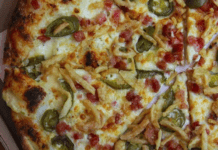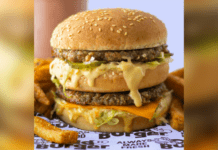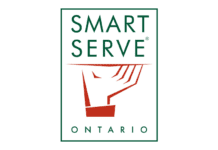When the COVID-19 pandemic took hold in March 2020, restaurant delivery and takeout operations abruptly transformed from an optional convenience to a necessity for survival. With restaurants across the country forced to rely on delivery to continue operating during on-and-off lockdowns, third-party-delivery providers, such as Uber Eats, DoorDash and SkipTheDishes, became a lifeline.
While many operators were grateful for the availability of a turnkey delivery solution during the re-occurring dine-in shutdowns, others were quick to voice concerns that the high commission fees charged by third-party-delivery apps were worsening an already dire economic crisis for the restaurant industry.
The big third-party players have responded by introducing measures to support Canadian restaurants, while many operators have called for caps on commission fees or turned to grassroots delivery-app alternatives. Even as dine-in re-opens in many parts of the country, consumer demand for food delivery isn’t going anywhere and neither are the challenges faced by operators looking to meet this demand while also turning a profit.
DIY delivery
Operator frustration with the steep commission fees charged by third-party providers has fuelled the emergence of small-scale, restaurant-run delivery services. Brandon Grossutti, founder of FromTo and owner of Vancouver’s Pidgin restaurant, says he realized in the early days of the pandemic that the major third-party providers were not going to work for his restaurant. “I’d known previously that the commission fees were bad and that it wasn’t a good thing for our model,” says Grossutti, “but there was no other option.”
Grossutti, who has a background in technology, began researching the possibility of building his own online-ordering platform and offering Vancouver restaurants an affordable alternative to the major third-party providers. “I started to look at the problem pragmatically and [assess] whether or not it was possible to create a grassroots movement in building this ourselves,” he says.
With the help of several business partners, Grossutti launched FromTo in May 2020. In FromTo’s model, customers pay a flat fee on every order, which goes directly towards paying their delivery driver, while the restaurant keeps 100 per cent of the food-order cost. Currently, the service is free for restaurants to use.
FromTo’s approach keeps as much money as possible in the pockets of restaurants, although Grossutti admits that it’s far from profitable for himself and his partners. “I’m losing a lot of money right now,” he laughs. “But the first thing we wanted to accomplish was to see if this was even technically possible. And then it was about making sure that this was equitable and fair for both the restaurant and the driver.”
With just under 40 restaurants on its platform, and close to 200 others set up and ready to launch, FromTo needs to expand, “but we want to make sure that we can support our restaurants and our drivers correctly and make sure that growth happens well,” Grossutti says.
Grossutti says FromTo will continue to offer its service for free to restaurants throughout the pandemic, but he knows it will eventually need to re-evaluate its business model in order to sustain operations over the long-term. “Post-pandemic, as people start to get their feet under them again, we’ll look at how we make this so that all parties are doing well,” he says.
Similar locally run delivery programs have been founded in other cities across Canada, including LocalEats.TO and Direct Local Eats in the GTA, Love Local Delivery in Ottawa and TOAD Takeout and Delivery in Kitchener-Waterloo, Ont.
Other operators trying to avoid paying delivery app commission fees have turned to neighbourhood volunteers, such as in Stouffville, Ont., where non-profit organization Hummingbird Hub co-ordinates volunteer drivers to carry out food delivery pick-ups as part of an initiative known as #SkipTheApps.
Some operators, such as the Armview Restaurant & Lounge in Halifax, have found a win-win scenario by recruiting un- or under-employed staff to work as their delivery drivers. The Armview did not offer delivery prior to the pandemic, according to general manager Julie White, but COVID-19 forced it to start.
“The initial decision to bring delivery in-house was [made] because we wanted to be able to hire back as much of our own staff as possible,” says White. “These third-party apps want to take anywhere from 20 to 30 per cent of your business. If we were only doing takeout and delivery and we only had one of these apps, we’d be losing money. I’ve done the math over and over again and it just never works out for us.”
She adds that doing delivery in-house also gives the Armview better quality control over the food it sends out to customers. “As soon as the food is ready, it’s going — we’re not waiting for someone to come pick it up,” she says. “We’re sending it out right away so it arrives hot and on time.”
The case for the third-party providers
A study of U.S. and Canadian restaurants carried out by Uber Eats in partnership with Technomic found that 82 per cent of restaurant operators say Uber Eats has been crucial to their business during COVID-19.
Dean Harrison, national director of Marketing for Aburi Restaurants Canada, is among those who say Uber Eats has been essential in its pivot to delivery. Prior to the pandemic, Aburi Restaurants had never offered delivery. Harrison says the group had been in the early stages of exploring third-party provider options when COVID-19 forced them to make a quick decision.
“For us, to pay X amount of commission to give all of the liability for delivery and the co-ordination of it to a third party made more financial sense than doing our own,” says Harrison. “We really enjoy our partnership with Uber Eats.”
He adds that Aburi Restaurants values the customer-analytics data that Uber Eats provides and they’ve also been featured in some of the company’s national marketing campaigns, which Harrison says has been great for business.
The promise of access to a huge audience is a major advantage that the big third-party players offer restaurants. “In addition to providing a platform to facilitate delivery and payment, Uber Eats also provides restaurants with exposure to a greater customer audience, promotional campaigns to increase demand, customer service and a streamlined order and payment-processing system,” says Lola Kassim, general manager for Uber Eats Canada.
Karen Davidson, general manager of Marben Restaurant in Toronto, says she considered restaurant-run delivery services such as LocalEats.TO but ultimately decided to sign up with Uber Eats. “We tried to arrange it with LocalEats.TO and they tried to help us as best as they could but it came down to logistics and finances,” says Davidson. “Uber Eats has that massive network of drivers and that massive social platform, so it was the only option that made sense.”
In addition to helping restaurants reach potential new customers, the major third-party providers have rolled out various initiatives over the past year to enhance their appeal to operators. Uber Eats’ campaigns to waive delivery fees for customers have boosted restaurant orders in the U.S. and Canada by as much as 30 per cent, according to Kassim.
Uber Eats has also waived activation fees for restaurants and introduced a daily payout feature to help with cash flow. The company has created different ways for restaurants to use its platform to minimize fees, including an option for customers to order through the platform and pick-up at the restaurant for a zero-per-cent service fee until June 30, 2021.
DoorDash has taken a similar approach, rolling out daily payout options to facilitate restaurant cash flow. The company also offered zero commission on pick-up orders and waived commissions for new restaurants joining the platform from mid-March until the end of May 2020. DoorDash has invested in marketing efforts to increase orders placed through the platform, including the DashPass subscription service, which allows customers to pay zero delivery fees on orders from select restaurants.
As with Uber Eats, operators can also reduce their commission fees on DoorDash by only opting into certain elements of their services. For example, DoorDash Drive allows operators to receive orders by phone or through their own app or website but use DoorDash’s network of drivers for a flat fee per delivery.
According to a SkipTheDishes spokesperson, “independent restaurant partners on the SkipTheDishes network are paying less than 20 per cent in commission while their dining-rooms are required to close,” partially thanks to commission rebates offered by the company. During what the spokesperson describes as “the restriction period,” restaurants pay zero commission for the first 30 days after signing up, while restaurants that use Skip’s platform for ordering but use their own staff for delivery pay 10.5 per cent commission. The company has also offered free delivery in Quebec during the province’s curfew restrictions.
The three major third-party players have also made charitable donations to various restaurant industry causes. Uber Eats made a $1-million contribution to the Canadian Hospitality Workers Relief Fund and another $1 million to the Eat Local Restaurant Relief Program in partnership with Restaurants Canada. DoorDash has provided $1,125,000 in local relief grants to restaurants in Montreal, Toronto and Vancouver as part of its Main Street Strong Pledge, while SkipTheDishes has donated more than $1.3 million to Food Banks of Canada during the pandemic.
Setting limits
In response to ongoing calls from industry leaders, many provinces have introduced commission-rate caps on third-party delivery providers (see sidebar) as a way of offering financial relief to restaurants struggling to adapt to delivery-focused business models.
Ontario was the first to introduce a short-term cap under its Supporting Local Restaurants Act, 2020 on December 19, 2020. The cap limits the rates food-delivery companies charge to 20 per cent for each transaction, including no more than 15 per cent in commission fees.
On the heels of Ontario’s decision, the B.C. government enacted an Emergency Program Act on December 23, 2020 that placed a temporary cap of 15 per cent on fees charged to restaurants by food-delivery companies.
Quebec introduced its own commission cap of 20 per cent in March 2021. The legislation came after Deli Boyz, a restaurant in Côte Saint-Luc, filed a class-action lawsuit against food-delivery companies in January 2021. The suit seeks damages for alleged exorbitant and abusive commissions charged by third-party companies, including Uber Eats, DoorDash and SkipTheDishes.
On March 24, 2021, Saskatchewan’s government announced that it, too, would cap fees at 18 per cent of a customer’s pre-tax order.
Aburi Restaurants’ Harrison and Marben’s Davidson point out that these caps are temporary — they all have either fixed expiration dates or become invalid once dine-in service resumes. Both say that it was important for them to negotiate individual commission rates that would be sustainable over the long-term, because the rate caps only provide a short-term solution.
FromTo’s Grossutti also doesn’t feel the rate caps address the root of the problem with third-party-delivery providers. “A lot of this is just shuffling money around,” he says. “If you’re taking 10 per cent away from them, they’re going to find that 10 per cent from somewhere else.”
This appeared to prove true when SkipTheDishes rolled out a 99-cent “B.C. fee” in February 2021, shortly after the rate cap was introduced by the province. The fee appears to pass costs once incurred by restaurants onto their customers instead.
The third-party providers, however, counter that their rates come down to the cost of running a profitable business. “Merchant fees help pay for a variety of business costs to support all three sides of our marketplace including paying Dashers meaningful earnings and driving volume and sales to merchant partners,” says Ryan Freeman, head of Enterprise Partnerships at DoorDash.
“Pricing regulations could cause us to increase costs for customers, which could lead to fewer orders for local restaurants and therefore fewer earning opportunities for Dashers. Pricing regulations can also remove options available to restaurants by limiting their ability to opt-in to additional services to help their business,” he adds.
The changing consumer
Experts say that, even as dine-in gradually re-opens across the country, the demand for delivery isn’t going anywhere. According to a 2021 report from Angus Reid Group, half of all Canadians have a delivery app on their phone.
“Delivery apps were growing pre-pandemic,” says Jo-Ann McArthur, president and chief strategist at Nourish Food Marketing in Toronto. She says younger generations were driving the trend prior to the pandemic, but widespread dining-room closures have motivated older Canadians to try delivery apps as well.“Older generations were pleasantly surprised by the experience, by the bigger pool of restaurants and just the whole convenience of them,” says McArthur. “I expect they will continue to use apps, even once things open up.”
While the ease of using apps is one of the reasons they are attractive for customers, McArthur says Canadians also enjoy the variety of choice offered by apps. She points to research from SkipTheDishes, which suggests that 60 per cent of diners don’t know what they’re planning to order when logging onto the app.
It’s a trend that FromTo’s Grossutti has noticed as well. “The users are not having a relationship with their restaurants anymore,” he says. “They’re not looking for that specific restaurant they like — they’re looking for burgers; they’re looking for tacos; they’re looking for pizza. You lose that relationship and now third-party-delivery companies are in charge of that relationship.”
The lockdowns that spurred the pivot to delivery may be ending, but it seems delivery itself is here to stay. “There are many places in the world where 50 per cent of revenue, regardless of whether you’re a fine-dining establishment or a pizza place, is through delivery,” says Grossutti. “That hybrid model is the long-term [reality]. In Canada, we just haven’t crossed the Rubicon on that quite yet.” – BY JESSICA HURAS

















